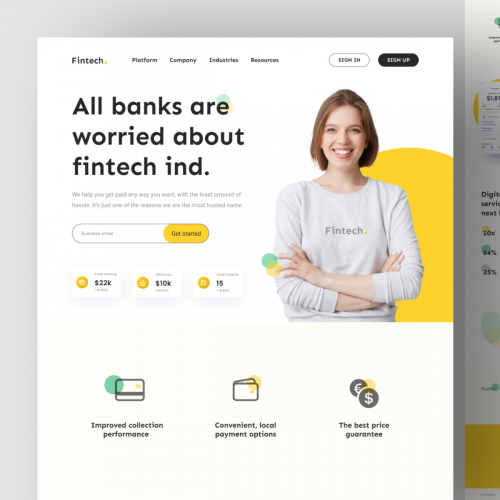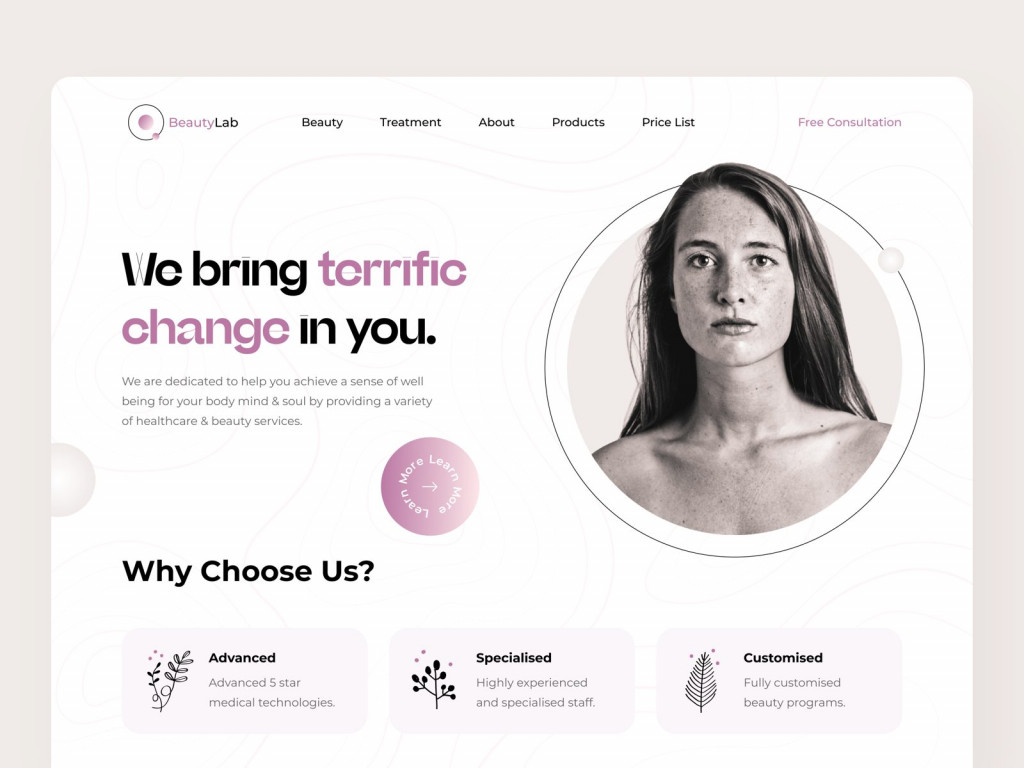Modern Web Site Layout That Records Interest and Transforms
In a progressively electronic landscape, modern website design has actually arised as an essential variable in capturing user focus and driving conversions. By strategically utilizing aesthetic pecking order, receptive designs, and engaging interactive aspects, designers can produce experiences that not only bring in visitors but additionally assist in meaningful interactions. Effective call-to-action approaches play an important duty in directing customers towards preferred end results. As we check out these necessary components, it comes to be clear that understanding their interplay can considerably influence a website's performance and customer satisfaction. What are the essential aspects that truly make a distinction?
Significance of Visual Hierarchy
Visual power structure is an essential aspect in web site layout, as it guides customers' attention and boosts their overall experience. By purposefully arranging content, designers can direct customers to the most crucial details initially, thus raising interaction and enhancing functionality.
Incorporating a rational flow in content setup is essential; for circumstances, placing the most essential details at the top of a page cultivates instant recognition. Furthermore, regular usage of typography, such as varying font dimensions and designs, helps establish a clear web content framework. This company not only aids in navigating but also develops count on, as individuals really feel much more comfortable when they can quickly find what they are seeking.
Ultimately, a well-executed aesthetic power structure not only improves visual appeal yet also substantially influences customer actions. By focusing on vital components and guaranteeing a seamless experience, developers can effectively transform site visitors right into consumers, strengthening the importance of this foundational style concept in contemporary site growth.
Responsive Layout for All Instruments
Developing a seamless experience across various tools is crucial in today's electronic landscape, where users access sites from mobile phones, tablet computers, and desktop computers alike. Receptive style is a crucial strategy that guarantees internet sites adjust fluidly to different screen resolutions, sizes, and positionings. By utilizing adaptable grids, pictures, and CSS media questions, designers can create layouts that preserve aesthetic integrity and capability, regardless of the tool being made use of.
The significance of responsive layout prolongs past aesthetic appeals; it directly influences individual engagement and conversion prices. A site that functions well on all tools encourages longer visits and lowers bounce prices, as individuals are a lot more most likely to communicate with material that is very easy to browse. In addition, internet search engine, particularly Google, focus on mobile-friendly websites in their positions, making receptive style an essential element of search engine optimization (SEARCH ENGINE OPTIMIZATION)
Including responsive design not just enhances individual experience but likewise simplifies the development procedure. By producing a solitary website that functions throughout tools, services can conserve time and sources contrasted to establishing separate mobile and desktop versions. Eventually, responsive layout is a fundamental technique for contemporary internet site design, ensuring ease of access and contentment for all customers, despite their tool.
Engaging Interactive Components
While a receptive layout lays the groundwork for a functional web site, including interesting interactive components is crucial for recording user interest and promoting much deeper connections. Website Design. Interactive elements, such as computer animations, quizzes, and clickable infographics, produce a much more dynamic user experience, urging site visitors to invest more time on the website
Incorporating interactive features can additionally lead users with complex information, making it easier to digest material. For instance, interactive sliders can highlight item variations, while embedded video clips can offer demos or testimonies that reverberate even more than static images or message. Gamification techniques, like rewards for finishing tasks or engaging with web content, can boost individual motivation and retention.
Effective use of interactive elements not only enhances the customer experience but can likewise lead to greater conversion prices. It is important to stabilize interactivity with performance; excessively complicated functions might hinder site speed, negatively impacting user contentment.
Streamlined Navigating Practices
Effective navigating is a cornerstone of any successful website, as it straight influences customer experience and material access. Streamlined navigating practices guarantee that users can quickly locate information, improving their interaction with the site. A well-structured navigating menu must be intuitive and basic, commonly including a restricted number of key groups to stay clear of overwhelming visitors.
To achieve streamlined navigating, designers must prioritize a hierarchical structure that practically organizes material. Applying breadcrumb trails can give users with context concerning their current area within the website, enabling smooth backtracking. Additionally, utilizing drop-down menus can effectively preserve area while still giving access to subcategories.
Responsive layout is important, as navigating must be functional across all tools (Website Design). Mobile individuals, specifically, see here take advantage of touch-friendly menus and collapsible sections that maintain usability without jeopardizing aesthetics

Effective Call-to-Action Techniques
A well-crafted call-to-action (CTA) is necessary for leading customers towards preferred results on a website, as it motivates them to involve with content or purchase. To optimize their effectiveness, CTAs must be clear, engaging, and tactically positioned throughout the site.
First, make use of action-oriented language that communicates urgency or value, such as "Begin," "Join Now," or "Insurance claim Your Price cut." This language not only inspires users however additionally sets clear assumptions regarding the following actions.
Second, take into consideration layout aspects; CTAs must stick out aesthetically with contrasting shades, sufficient whitespace, and popular positioning. A switch that is very easy to see and click rises the possibility of customer communication.
Furthermore, personalizing CTAs based upon user behavior or demographics can considerably boost involvement. Customized messages resonate more with customers, driving higher conversion rates.

Final Thought
These components jointly boost user experience, making certain that site visitors continue to be engaged and motivated go to my site to explore content further. By prioritizing these layout concepts, businesses can considerably improve user retention and conversion prices, ultimately leading to better success in the digital landscape.
In an increasingly digital landscape, modern-day website design has emerged as an essential variable in catching user focus and driving conversions.Visual hierarchy is a crucial element in website layout, as it guides customers' attention and boosts their general experience.The value of responsive design extends beyond aesthetics; it straight affects user engagement and conversion rates.Integrating responsive design not only enhances customer experience however also simplifies the growth process. Eventually, receptive layout have a peek here is an essential approach for modern internet site layout, guaranteeing availability and complete satisfaction for all customers, regardless of their gadget.